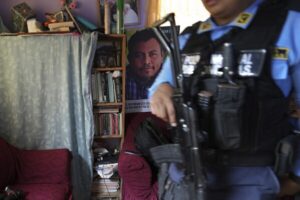From book bans to the potential shuttering of the Department of Education, what happens in schools has become a particularly hot-button political issue, prompting contention between political factions at the local and federal levels. Measures taken to resist interference from Washington have been varied, with some teachers quietly defying the bans while others partner with civil rights groups to challenge classroom censorship bills. Parents and students alike turned out in droves earlier this month to protest, among other issues, the gutting of the Department of Education. But amidst mounting pushback to political meddling, many advocates miss an even larger threat to quality education: climate change.
Climate change has already disrupted access to education for millions of children worldwide, according to a January 2025 UNICEF report. As climate change worsens, extreme events like heat waves, tropical cyclones, storms, floods, and droughts will only continue to exacerbate an existing learning crisis by damaging school supplies, school buildings, the routes that students take to school and the actual health and safety of students.
How climate change can disrupt education:
- Closing of schools: Climate disasters force schools to shut down for months at a time. Floods, tornadoes, and hurricanes can completely destroy buildings or damage them to the point where they’re unsafe. In the aftermath of Hurricane Katrina, “it’s estimated that more than 50,000 children did not attend school in 2005-2006, and approximately 15,000 did not attend in 2006-2007.”
- Destruction of infrastructure and materials: Schools in low income areas and countries can lack strong infrastructure or the ability to update or rebuild their buildings. Disasters such as landslides or floods, not only destroy buildings, they also destroy materials. Textbooks and technology are destroyed by natural disasters.
- Displacement: Climate disasters can completely displace families and force them into homelessness or to migrate. After a climate disaster, education falls on the list of priorities for a family as the family is forced into survival. After Hurricane Katrina, “approximately 118,000 school-age children in Louisiana and 20,000 school-age children in Mississippi were displaced.”
But this damage to education wrought by climate change isn’t distributed evenly. In 2005, billions of dollars in aid were poured into rebuilding New Orleans after Hurricane Katrina—and it still took months to rebuild. More recently, a heat wave affecting southeast Asia last summer forced metropolitan areas to switch to online learning—but remote learning wasn’t an option for poorer children in rural areas whose families couldn’t afford laptops or tablets. In the coming years, climate change is threatening to widen the gap between developed and developing countries, with the latter often lacking the funding and technology to respond to climate disasters. In the meantime, children are out of school.
As climate change becomes a larger issue, the number of children who are out of school will only increase. Investing in disaster assistance, disaster resilient infrastructure, and remote learning models are crucial in ensuring that the gap in education does not continue to grow.



